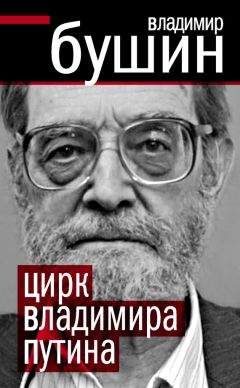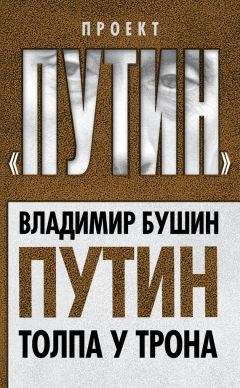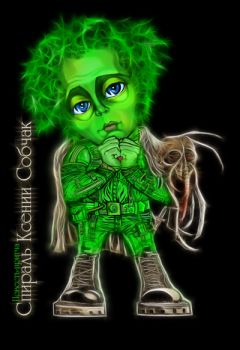Steven Dubner - Freakonomics
5.9
Number of nonfatal wounds or injuries 2.4
(not including injuries meted out by the gang itself for rules violations) Chance of being killed
1 in 4
A 1-in-4 chance of being killed! Compare these odds to being a timber cutter, which the Bureau of Labor Statistics calls the most dangerous job in the United States. Over four years’ time, a timber cutter would stand only a 1-in-200 chance of being killed. Or compare the crack dealer’s odds to those of a death row inmate in Texas, which executes more prisoners than any other state. In 2003, Texas put to death twenty-four inmates—or just 5 percent of the nearly 500
inmates on its death row during that time. Which means that you stand a greater chance of dying while dealing crack in a Chicago housing project than you do while sitting on death row in Texas.
So if crack dealing is the most dangerous job in America, and if the salary is only $3.30 an hour, why on earth would anyone take such a job?
Well, for the same reason that a pretty Wisconsin farm girl moves to Hollywood.
For the same reason that a high-school quarterback wakes up at 5 a.m. to lift weights. They all want to succeed in an extremely competitive field in which, if you reach the top, you are paid a fortune (to say nothing of the attendant glory and power).
To the kids growing up in a housing project on Chicago’s south side, crack dealing was a glamour profession. For many of them, the job of gang boss—
highly visible and highly lucrative—was easily the best job they thought they had access to. Had they grown up under different circumstances, they might have thought about becoming economists or writers. But in the neighborhood where J. T.’s gang operated, the path to a decent legitimate job was practically invisible. Fifty-six percent of the neighborhood’s children lived below the poverty line (compared to a national average of 18 percent). Seventy-eight percent came from single-parent homes. Fewer than 5 percent of the neighborhood’s adults had a college degree; barely one in three adult men worked at all. The neighborhood’s median income was about $15,000 a year, well less than half the U.S. average. During the years that Venkatesh lived with J. T.’s gang, foot soldiers often asked his help in landing what they called “a good job”: working as a janitor at the University of Chicago.
The problem with crack dealing is the same as in every other glamour profession: a lot of people are competing for a very few prizes. Earning big money in the crack gang wasn’t much more likely than the Wisconsin farm girl becoming a movie star or the high-school quarterback playing in the NFL. But criminals, like everyone else, respond to incentives. So if the prize is big enough, they will form a line down the block just hoping for a chance. On the south side of Chicago, people wanting to sell crack vastly outnumbered the available street corners.
These budding drug lords bumped up against an immutable law of labor: when there are a lot of people willing and able to do a job, that job generally doesn’t pay well. This is one of four meaningful factors that determine a wage. The others are the specialized skills a job requires, the unpleasantness of a job, and the demand for services that the job fulfills.
The delicate balance between these factors helps explain why, for instance, the typical prostitute earns more than the typical architect. It may not seem as though she should. The architect would appear to be more skilled (as the word is usually defined) and better educated (again, as usually defined). But little girls don’t grow up dreaming of becoming prostitutes, so the supply of potential prostitutes is relatively small. Their skills, while not necessarily “specialized,” are practiced in a very specialized context. The job is unpleasant and forbidding in at least two significant ways: the likelihood of violence and the lost opportunity of having a stable family life. As for demand? Let’s just say that an architect is more likely to hire a prostitute than vice versa.
In the glamour professions—movies, sports, music, fashion—there is a different dynamic at play. Even in second-tier glamour industries like publishing, advertising, and media, swarms of bright young people throw themselves at grunt jobs that pay poorly and demand unstinting devotion. An editorial assistant earning $22,000 at a Manhattan publishing house, an unpaid high-school quarterback, and a teenage crack dealer earning $3.30 an hour are all playing the same game, a game that is best viewed as a tournament.
The rules of a tournament are straightforward. You must start at the bottom to have a shot at the top. (Just as a Major League shortstop probably played Little League and just as a Grand Dragon of the Ku Klux Klan probably started out as a lowly spear-carrier, a drug lord typically began by selling drugs on a street corner.) You must be willing to work long and hard at substandard wages. In order to advance in the tournament, you must prove yourself not merely above average but spectacular. (The way to distinguish yourself differs from profession to profession, of course; while J. T. certainly monitored his foot soldiers’ sales performance, it was their force of personality that really counted—more than it would for, say, a shortstop.) And finally, once you come to the sad realization that you will never make it to the top, you will quit the tournament. (Some people hang on longer than others—witness the graying “actors” who wait tables in New York—but people generally get the message quite early.) Most of J. T.’s foot soldiers were unwilling to stay foot soldiers for long after they realized they weren’t advancing. Especially once the shooting started. After several relatively peaceful years, J. T.’s gang got involved in a turf war with a neighboring gang. Drive-by shootings became a daily event. For a foot soldier—
the gang’s man on the street—this development was particularly dangerous. The nature of the business demanded that customers be able to find him easily and quickly; if he hid from the other gang, he couldn’t sell his crack.
Until the gang war, J. T.’s foot soldiers had been willing to balance the risky, low-paying job with the reward of advancement. But as one foot soldier told Venkatesh, he now wanted to be compensated for the added risk: “Would you stand around here when all this shit is going on? No, right? So if I gonna be asked to put my life on the line, then front me the cash, man. Pay me more ’cause it ain’t worth my time to be here when they’re warring.”
J. T. hadn’t wanted this war. For one thing, he was forced to pay his foot soldiers higher wages because of the added risk. Far worse, gang warfare was bad for business. If Burger King and McDonald’s launch a price war to gain market share, they partly make up in volume what they lose in price. (Nor is anyone getting shot.) But with a gang war, sales plummet because customers are so scared of the violence that they won’t come out in the open to buy their crack. In every way, war was expensive for J. T.
So why did he start the war? As a matter of fact, he didn’t. It was his foot soldiers who started it. It turns out that a crack boss didn’t have as much control over his subordinates as he would have liked. That’s because they had different incentives.
For J. T., violence was a distraction from the business at hand; he would have preferred that his members never fired a single gunshot. For a foot soldier, however, violence served a purpose. One of the few ways that a foot soldier could distinguish himself—and advance in the tournament—was by proving his mettle for violence. A killer was respected, feared, talked about. A foot soldier’s incentive was to make a name for himself; J. T.’s incentive was, in effect, to keep the foot soldiers from doing so. “We try to tell these shorties that they belong to a serious organization,” he once told Venkatesh. “It ain’t all about killing. They see these movies and shit, they think it’s all about running around tearing shit up.
But it’s not. You’ve got to learn to be part of an organization; you can’t be fighting all the time. It’s bad for business.”
In the end, J. T. prevailed. He oversaw the gang’s expansion and ushered in a new era of prosperity and relative peace. J. T. was a winner. He was paid well because so few people could do what he did. He was a tall, good-looking, smart, tough man who knew how to motivate people. He was shrewd too, never tempting arrest by carrying guns or cash. While the rest of his gang lived in poverty with their mothers, J. T. had several homes, several women, several cars.
He also had his business education, of course. He constantly worked to extend this advantage. That was why he ordered the corporate-style bookkeeping that eventually found its way into Sudhir Venkatesh’s hands. No other franchise leader had ever done such a thing. J. T. once showed his ledgers to the board of directors to prove, as if proof were needed, the extent of his business acumen.
And it worked. After six years running his local gang, J. T. was promoted to the board of directors. He was now thirty-four years old. He had won the tournament. But this tournament had a catch that publishing and pro sports and even Hollywood don’t have. Selling drugs, after all, is illegal. Not long after he made the board of directors, the Black Disciples were essentially shut down by a federal indictment—the same indictment that led the gangster named Booty to turn over his notebooks to Venkatesh—and J. T. was sent to prison.
Now for another unlikely question: what did crack cocaine have in common with nylon stockings?
In 1939, when DuPont introduced nylons, countless American women felt as if a miracle had been performed in their honor. Until then, stockings were made of silk, and silk was delicate, expensive, and in ever shorter supply. By 1941, some sixty-four million pairs of nylon stockings had been sold—more stockings than there were adult women in the United States. They were easily affordable, immensely appealing, practically addictive.
DuPont had pulled off the feat that every marketer dreams of: it brought class to the masses. In this regard, the invention of nylon stockings was markedly similar to the invention of crack cocaine.
In the 1970s, if you were the sort of person who did drugs, there was no classier drug than cocaine. Beloved by rock stars and movie stars, ballplayers and even the occasional politician, cocaine was a drug of power and panache. It was clean, it was white, it was pretty. Heroin was droopy and pot was foggy but cocaine provided a beautiful high.
Alas, it was also very expensive. Nor did the high last long. This led cocaine users to try jacking up the drug’s potency. They did this primarily by freebasing—adding ammonia and ethyl ether to cocaine hydrochloride, or powdered cocaine, and burning it to free up the “base” cocaine. But this could be dangerous. As Richard Pryor famously proved—he nearly killed himself while freebasing—chemistry is best left to chemists.
Meanwhile, cocaine dealers and aficionados across the country, and perhaps also in the Caribbean and South America, were working on a safer version of distilled cocaine. They found that mixing powdered cocaine in a saucepan with baking soda and water, and then cooking off the liquid, produced tiny rocks of smokeable cocaine. It came to be called crack for the crackling sound the baking soda made when it was burned. More affectionate nicknames would soon follow: Rock, Kryptonite, Kibbles ’n Bits, Scrabble, and Love. By the early 1980s, the class drug was ready for the masses. Now only two things were needed to turn crack into a phenomenon: an abundant supply of raw cocaine and a way to get the new product to a mass market.
The cocaine was easy to come by, for the invention of crack coincided with a Colombian cocaine glut. During the late 1970s, the wholesale price of cocaine in the United States fell dramatically, even as its purity was rising. One man, a Nicaraguan émigré named Oscar Danilo Blandon, was suspected of importing far more Colombian cocaine than anyone else. Blandon did so much business with the budding crack dealers of South Central Los Angeles that he came to be known as the Johnny Appleseed of Crack. Blandon would later claim that he was selling the cocaine to raise money for the CIA-sponsored Contras back home in Nicaragua. He liked to say that the CIA was in turn watching his back in the United States, allowing him to sell cocaine with impunity. This claim would spark a belief that still seethes to this day, especially among urban blacks, that the CIA itself was the chief sponsor of the American crack trade.
Verifying that claim is beyond the purview of this book. What is demonstrably true is that Oscar Danilo Blandon helped establish a link—between Colombian cocaine cartels and inner-city crack merchants—that would alter American history. By putting massive amounts of cocaine into the hands of street gangs, Blandon and others like him gave rise to a devastating crack boom. And gangs like the Black Gangster Disciple Nation were given new reason to exist.
As long as there have been cities, there have been gangs of one sort or another. In the United States, gangs have traditionally been a sort of halfway house for recent immigrants. In the 1920s, Chicago alone had more than 1,300 street gangs, catering to every ethnic, political, and criminal leaning imaginable. As a rule, gangs would prove much better at making mayhem than money. Some fancied themselves commercial enterprises, and a few—the Mafia, most notably—
actually did make money (at least for the higher-ups). But most gangsters were, as the cliché assures us, two-bit gangsters.
Black street gangs in particular flourished in Chicago, with membership in the tens of thousands by the 1970s. They constituted the sort of criminals, petty and otherwise, who sucked the life out of urban areas. Part of the problem was that these criminals never seemed to get locked up. The 1960s and 1970s were, in retrospect, a great time to be a street criminal in most American cities. The likelihood of punishment was so low—this was the heyday of a liberal justice system and the criminals’ rights movement—that it simply didn’t cost very much to commit a crime.
By the 1980s, however, the courts had begun to radically reverse that trend.
Criminals’ rights were curtailed and stricter sentencing guidelines put in place.
More and more of Chicago’s black gangsters were getting sent to federal prisons.
By happy coincidence, some of their fellow inmates were Mexican gang members with close ties to Colombian drug dealers. In the past, the black gangsters had bought their drugs from a middleman, the Mafia—which, as it happened, was then being pummeled by the federal government’s new anti-racketeering laws.
But by the time crack came to Chicago, the black gangsters had made the connections to buy their cocaine directly from Colombian dealers.
Cocaine had never been a big seller in the ghetto: it was too expensive. But that was before the invention of crack. This new product was ideal for a low-income, street-level customer. Because it required such a tiny amount of pure cocaine, one hit of crack cost only a few dollars. Its powerful high reached the brain in just a few seconds—and then faded fast, sending the user back for more. From the outset, crack was bound to be a huge success.



